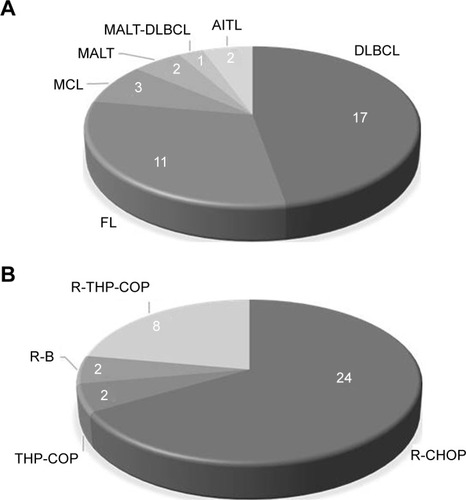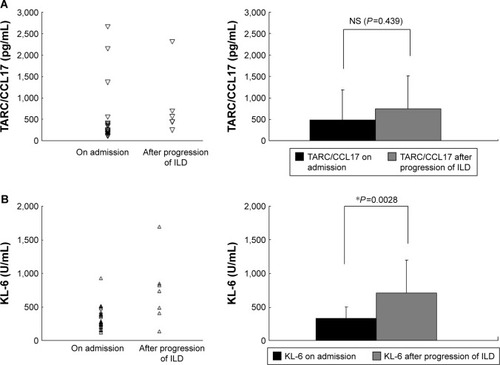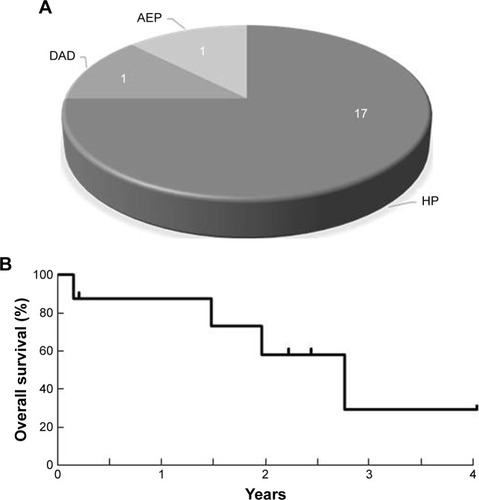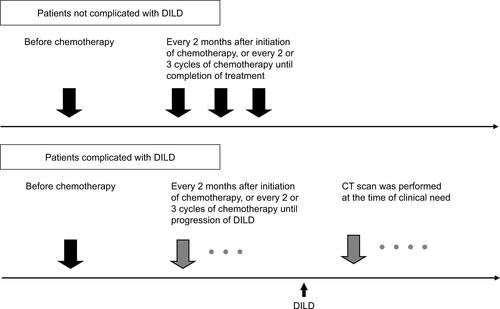Figures & data
Figure 1 Demographic characteristics of the study population.
Abbreviations: AI TL, angioimmunoblastic T-cell lymphoma; DLBCL, diffuse large B-cell lymphoma; FL, follicular lymphoma; IL D, interstitial lung disease; MAL T, mucosa-associated lymphoid tissue; MCL, mantle cell lymphoma; ML, malignant lymphoma; R-B, rituximab and bendamustine; R-CHOP, rituximab, cyclophosphamide, doxorubicin, vincristine, and prednisolone; R-THP-COP, rituximab, tetrahydropyranyl-adriamycin, cyclophosphamide, vincristine, and prednisolone; THP-COP, tetrahydropyranyl-adriamycin, cyclophosphamide, vincristine, and prednisolone.

Table 1 Patient characteristics (n=36)
Figure 2 A comparison of the average concentration of serum TARC/CCL17 and KL-6 before/after the development of drug-induced IL D.
Abbreviations: IL D, interstitial lung disease; KL-6, Krebs von den Lungen-6; TARC/CCL17, thymus and activation-regulated chemokine/CC chemokine ligand 17; NS, not significant.

Figure 3 Radiological subtype and the overall survival of DIL D.
Abbreviations: AE P, acute eosinophilic pneumonia; DAD, diffuse alveolar damage; DIL D, drug-induced interstitial lung disease; HP, hypersensitivity pneumonitis.

Table 2 Summary of clinical outcome in the patients with drug-induced ILD
Table 3 Diagnostic value of measurement of circulating TARC/CCL17 and KL-6
Figure 4 The ROC curves of TARC/CCL17 and KL-6 as a surrogate diagnostic marker of DIL D. AUC of TARC/CCL17 and KL-6 detecting DIL D proved to be nearly equal.


